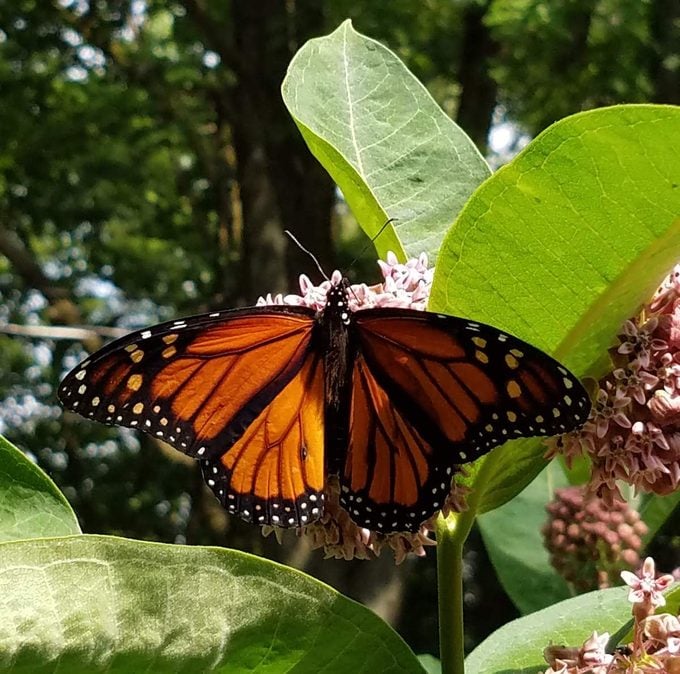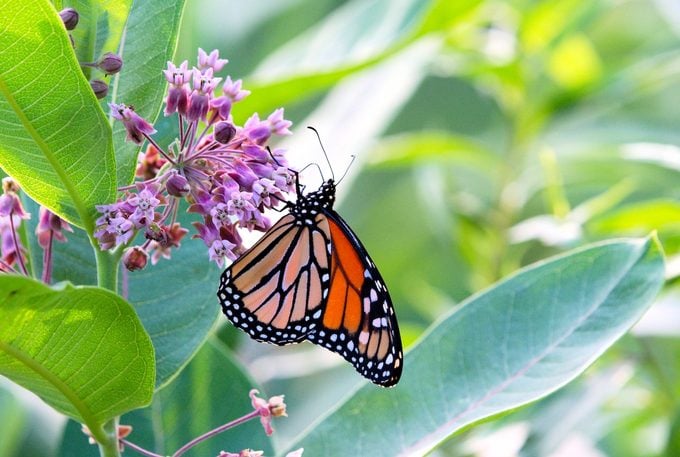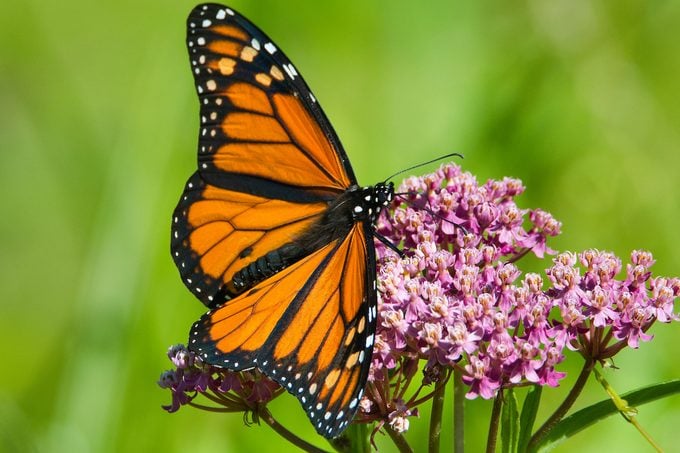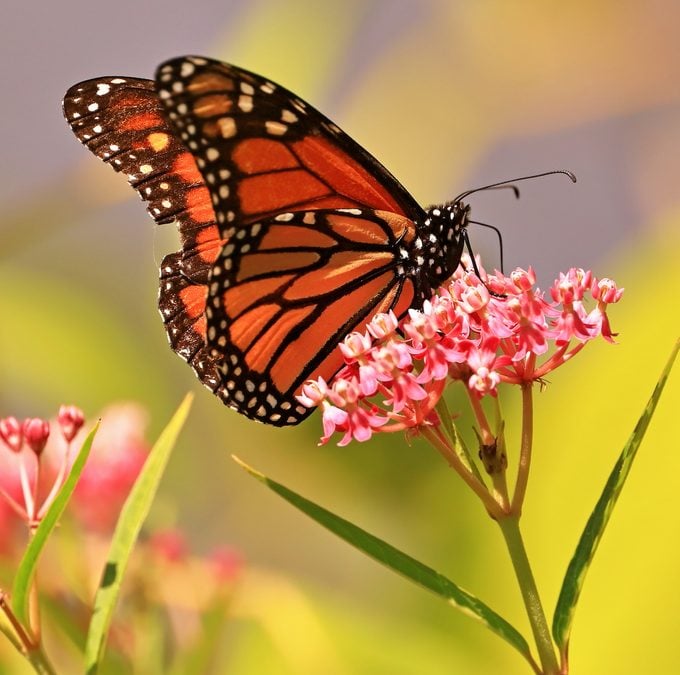Does Milkweed Need Full Sun or Shade to Grow Best?
Updated: Dec. 22, 2023
Wondering if milkweed needs full sun, or if it can take a little shade? Here's the answer.

Butterfly gardeners know the importance of milkweed. This plant family is vital to the survival of monarch butterflies, since it’s the only host plant their caterpillars eat. As scientists stress the importance of providing as much of this valuable plant as possible, gardeners often ask: Does milkweed need full sun to thrive? Find out if you have the proper growing conditions.
Learn everything you need to know about growing milkweed in the ultimate milkweed plant growing guide.
Does Milkweed Need Full Sun?

The answer depends on the species of milkweed you’re growing. For many, common milkweed (Asclepias syriaca) is the most readily available. This fast-growing plant boasts big leaves that can sustain lots of caterpillars, and it’s native to a huge portion of the eastern United States and Canada. The multi-flowered bloom heads draw adult butterflies of many species, including monarchs, making it a terrific all-in-one garden plant.
Common milkweed does love full sun. It does best when it receives 6 to 8 hours of direct sun each day. Not all gardens can provide this kind of exposure, though. Fortunately, there are a few species of milkweed that can handle a little more shade.
Grow showy milkweed in arid conditions.
What Happens When Milkweed Doesn’t Get Enough Sun?

In the shade, many milkweed species won’t grow as much or flower as well. Shady areas are often also a bit damp, which can cause disease in both plants and caterpillars. Prevent these problems by spacing milkweed plants well apart, to encourage better air circulation.
Is tropical milkweed bad for monarchs?
Can Milkweed Get Too Much Sun?
With the exception of varieties that prefer partial shade, milkweed plants can generally handle all the sunlight you can give. If you live in an area with exceptionally hot dry summers, be sure to plant locally-native varieties that have evolved to handle the heat.
If yours still seem to struggle, they might benefit from a bit of shade during the hottest part of the afternoon. They may also need extra water during heat waves. Otherwise, most milkweed plants love sun!
Discover fascinating milkweed facts you should know.
What Milkweed Varieties Are Best for Shady Conditions?

Some species are specially adapted for growing in shaded conditions. In the wild, these are usually found in the understory of forested spaces. Here are the top milkweed picks for shady spots:
- Poke milkweed (A. exaltata): This woodland species shares its native range with that of common milkweed, making it the perfect alternative for many butterfly gardeners in the eastern U.S. and Canada. It prefers partial shade to grow best.
- Purple milkweed (A. purpurascens): If you like the look of common milkweed but need more shade tolerance, purple milkweed can be a smart pick. It’s also much less aggressive than A. syriaca. Purple milkweed is native from the north-eastern U.S., west through Texas.
- Swamp milkweed (A. incarnata): As its name suggests, this species grows in wet areas, often alongside streams. It likes sunlight, but can also handle part-shade, especially in the afternoon. It has a wider range than poke milkweed, stretching south all the way to Florida and Texas, and west through the Rockies.
- Aquatic milkweed (A. perennis): Native to the southeastern U.S., this species tolerates shade but requires moist soil to thrive. It’s smaller than swamp milkweed, so it can’t sustain as many caterpillars. Still, it’s a nice choice in shaded southeastern rain gardens.
- Whorled milkweed (A. verticillata): Native to most of the eastern U.S., whorled milkweed can handle partial sun, and its white flowers are lovely in a shadier setting. That said, the foliage consists of very narrow leaves, and individual plants don’t provide much food for monarchs. If you can grow it in large patches, consider adding this to your partially-shaded spots.
With more than 70 species of milkweed found throughout North America, there’s a good choice for pretty much any garden. Do some research to find varieties native to your area, and ask your local extension office or native plant nursery for advice.
Next, learn how to collect milkweed seeds from pods.




















